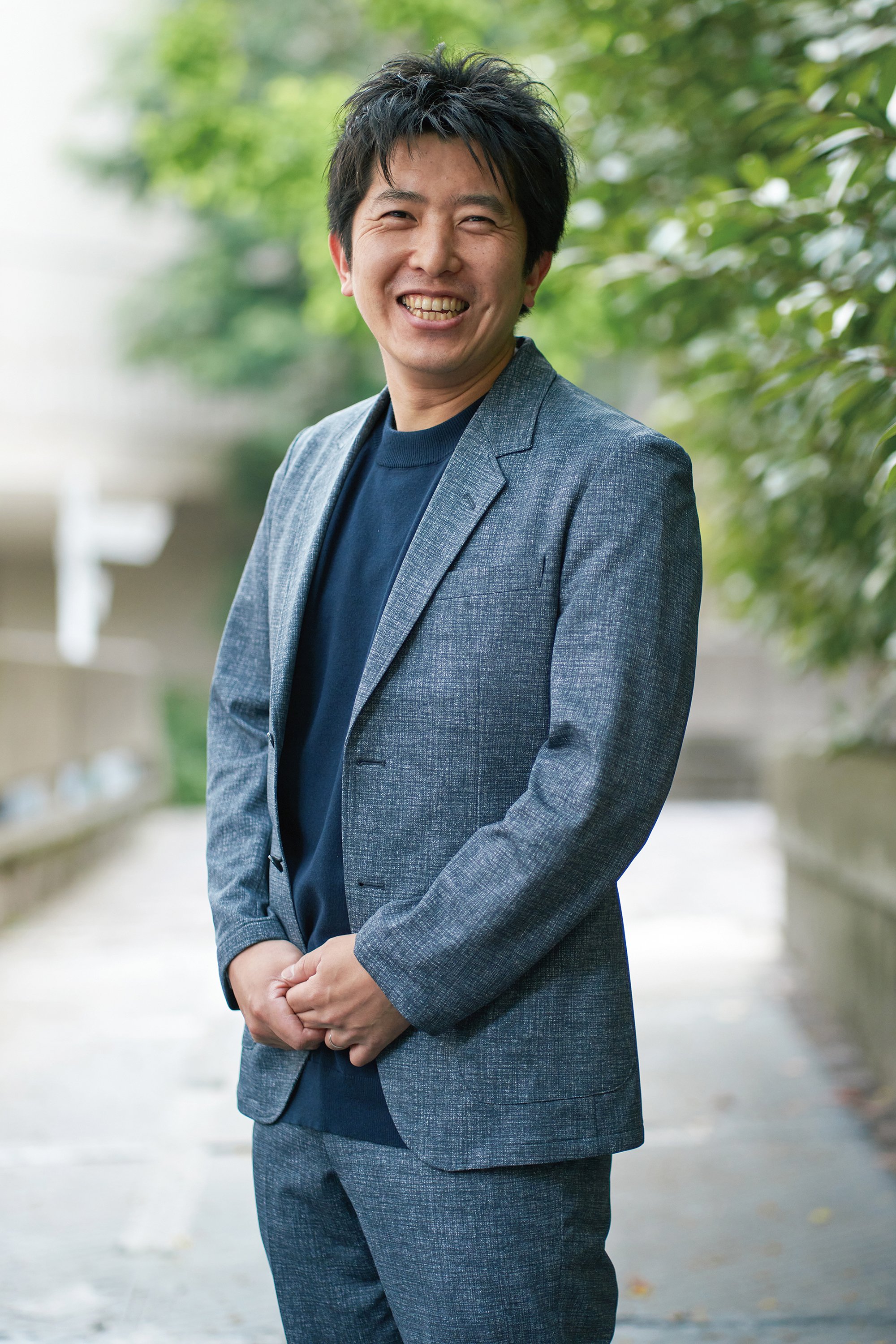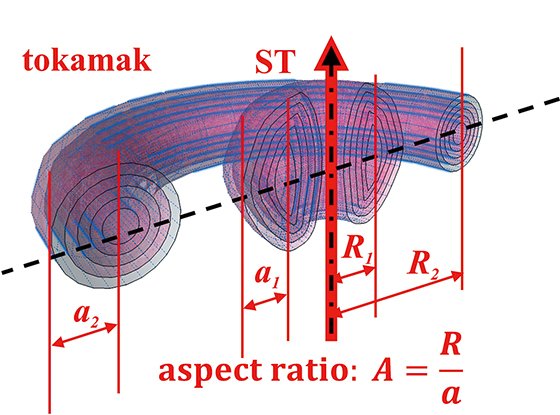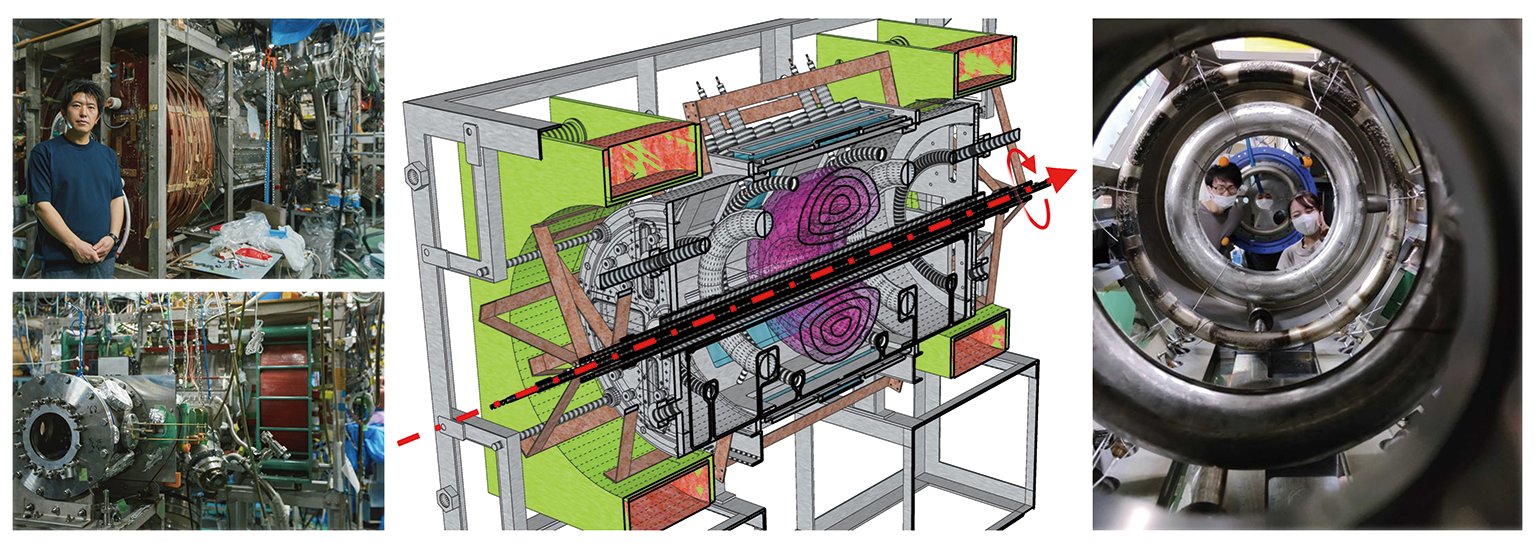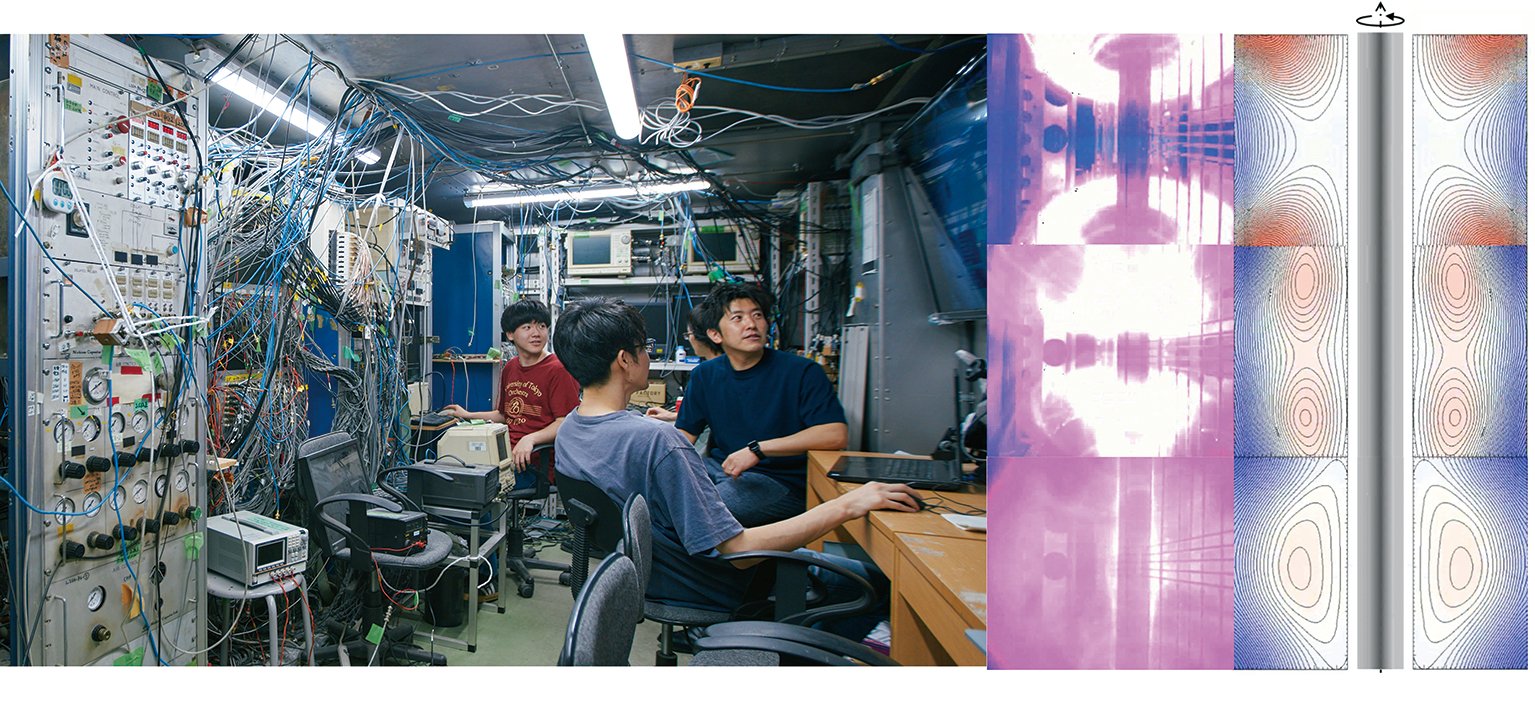Frontier Sciences: Hiroshi Tanabe
A Turning Point of Fusion Energy Research: Increasing Commercial Ventures for Practical Application

Make the Sun’s Energy Generation (Fusion Reactions) Happen on Earth!— The emergence of several startups with a capital of over 100 billion yen in the previous years has significantly stimulated scientists who work on projects that sound like a sci-fi fantasy, generating energy on Earth by confining plasma in a magnetic field reactor at 100 million degrees Celsius. Ambitious startups that develop original reactors are rapidly increasing and accelerating research and development (R&D) for practical applications. Nuclear fusion R&D is currently at a turning point.
Hiroshi Tanabe
Associate Professor
Energy Conversion System Laboratory
Department of Advanced Energy
Division of Transdisciplinary Sciences
http://tanuki.t.u-tokyo.ac.jp/english-lab/
“When will nuclear fusion be realized?” People keep asking me this question because many startups have announced ambitious plans to realize nuclear fusion soon.
The Joint European Torus (JET) in Europe and Tokamak Fusion Test Reactor (TFTR) in the United States demonstrated 10 MW fusion outputs and quasi-steady plasma scenarios already in the 1990s. Japan has successfully achieved a 520 million degrees Celsius output with the Japan Torus 60 Upgrade (JT-60U) reactor (recorded in the Guinness Book of Records) and critical plasma with a fusion energy gain factor (denoted as Q) of approximately 1. These reactors are known as the world’s three most significant tokamak devices.
In 2023, the Japan Torus 60 Super Advanced (JT-60SA), a successor aiming to enhance the performance of JT-60U, produced its first plasmas, as announced in a press release. ITER, an international project with a thermonuclear experimental reactor, aims to demonstrate “burning” plasma with Q > 10 and is scheduled to attempt to produce the first plasma soon.
In the so-called “Era of ITER and SA,”[1] startups and universities are currently accelerating R&D for more efficient plasma production in a confined magnetic field using the next means, high-temperature superconductivity, and a compact reactor that efficiently harnesses the magnetic field, considering the practical usage of the reactor and the competitive market.
In association with the Ono & Inomoto laboratory at the GSFS, our laboratory focuses on spherical tokamak (ST) research [2]. In comparison with tokamak, which has a donuts-shaped configuration with a large major radius R and a small minor radius a, the aspect ratio A = R/a for spherical tokamak (ST) is much lower than that of tokamak, leading to the characteristic apple-shaped structure and efficient use of magnetic field. This shape enhances the tokamak’s use efficiency of the magnetic field. Although the upper limit of beta (ratio of thermal to magnetic pressure) is a few percent for regular-type tokamaks, an ST generates a beta as high as over 40%, according to several reports (refer to an article by Prof. Saito in Sosei Vol. 41 about beta. https://www.k.u-tokyo.ac.jp/en/gsfs/sosei/vol41/p8.html).

The fingerprint of plasma confined in a magnetic field is its “major radius” R and “minor radius” a. The aspect ratio of a spherical tokamak (ST) is smaller than a tokamak’s, which makes the full form of ST plasma near-spherical.
To enhance the efficiency of plasma production and develop a heating method for the ST, we have adopted ideas gained from space plasma studies. We focus on experimental research for rapidly starting high-temperature and high-beta STs. Precisely, we induce an explosive energy-release phenomenon by plasma merging in a laboratory on Earth. Similar to the basic phenomena of solar flares, this phenomenon typically occurs during magnetic reconnection (reconnection of magnetic lines of force). Thus, the energy-release phenomenon leads to a rapid heating of megawatts to gigawatts.
This heating method developed at the University of Tokyo has been adopted by multiple startups in England and America in the past few years. For example, Tokamak Energy Ltd., a British company closely associated with us, recorded an enormous heating of 10–20 million degrees Celsius in an application experiment with their ST40 device using our merging heating method. In 2022, 100 million degrees Celsius was successfully achieved with the auxiliary heating of a neutral particle beam for the first time in the world in a nuclear fusion experiment by a private company. It was breaking news and significantly boosted the entry of commercial ventures into the fusion energy industry. Moreover, the accumulation of the database through the joint experiment by Japan and England led to the establishment of a scaling rule. The rule states that the outlet by merging heating is proportional to the square of the intensity of the magnetic field of recombination elements that contribute to magnetic reconnection.
Presently, we have reached the phase where we can estimate what configuration of the coil and power enables the rapid start of an ST with the heat of 100 million degrees Celsius only via the merging heating method. We will continue to advance the research, gather knowledge, and practicalize it, working toward applying this technology in society.
NOTES
[1] ITER is the largest tokamak being built with the cooperation of seven global partners in nuclear fusion research. Considering that Q > 10 significantly enhanced the output ratio to the artificial heating supply, a Q > 10 “burning” plasma experiment has been scheduled. JT-60SA is Japan’s original device and an advanced version of JT-60U known for a global record of 520 million degrees Celsius. It is scheduled to promote advanced plasma operation with high beta and regular operation scenarios. Refer to Prof. Shinohara’s article in Sosei Vol. 42 for more details: https://www.k.u-tokyo.ac.jp/en/gsfs/sosei/vol42/p8.html
[2] Refer to the article “GSFS Research” in the cover story of Sosei Vol. 43: https://www.k.u-tokyo.ac.jp/en/gsfs/sosei/vol43/p2.html
 We use three devices: our primary device—TS-6 (Φ 750 mm × 1,440 mm; the photos and illustration above indicate the inner structure), which produced its first plasmas in 2018; TS-4, which is double the size of TS-6 (now under refurbishment); and UTST. Storing the energy of 0.1–1 MJ in a capacitive power supply and pulse-compressing it within 0.1–1 ms enables us to conduct experiments with a high energy of 1 GW in a university laboratory.
We use three devices: our primary device—TS-6 (Φ 750 mm × 1,440 mm; the photos and illustration above indicate the inner structure), which produced its first plasmas in 2018; TS-4, which is double the size of TS-6 (now under refurbishment); and UTST. Storing the energy of 0.1–1 MJ in a capacitive power supply and pulse-compressing it within 0.1–1 ms enables us to conduct experiments with a high energy of 1 GW in a university laboratory.
 (Left) The control room (a magnetically shielded room) where we conduct plasma experiments
(Left) The control room (a magnetically shielded room) where we conduct plasma experiments
(Right) Plasma merging experiment
Two tokamak plasma rings are generated at the top and bottom of the device, and the rings are merged in the middle. When plasmas are merged, magnetic reconnection (reconnection of magnetic lines of force) occurs. Subsequently, magnetic energy is converted into thermal energy. This phenomenon is harnessed to generate high-beta ST plasmas.
vol.44
- Cover
- The Potentials of Materials Science
- A Turning Point of Fusion Energy Research: Increasing Commercial Ventures for Practical Application
- Pioneering New Life Science with Parasitology and Bioinformatics
- For Acquisition and Proper Use of Water Environment Data
- GSFS Front Runners: Interview with an entrepreneur
- Voices from International Students
- On Campus/Off Campus
- Event & Topics
- Awards
- Information
- Relay Essay
